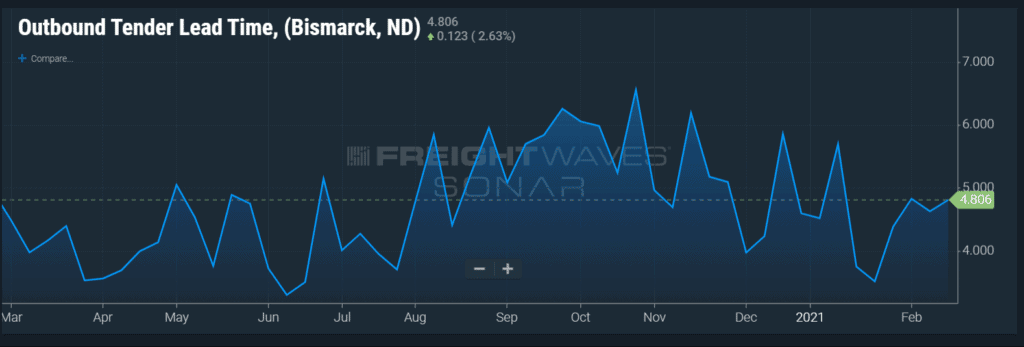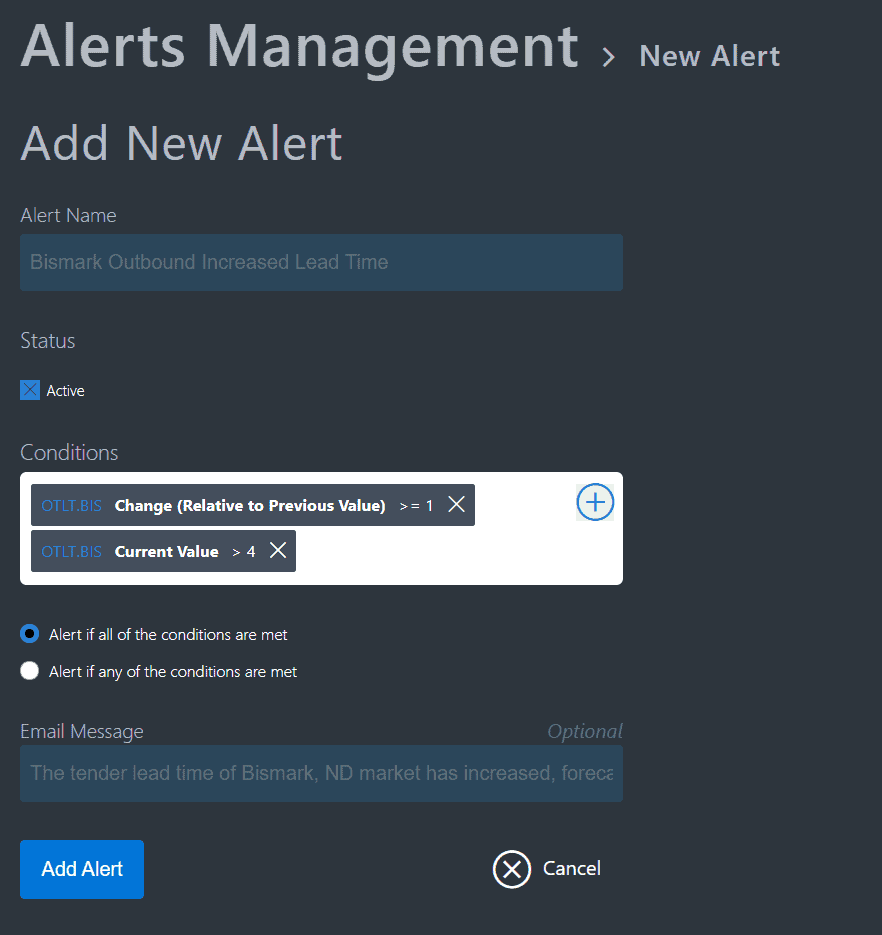When leading a freight sales team, it is critical to recognize the importance of a sales representatives’ time management and where their attention is directed in order to get the best return on their efforts.
Many freight sales professionals will tell you they landed a customer because they “called them at the right time”.
What if you were able to be alerted to “that right time”?
Fortunately, FreightWaves SONAR has 150,000+ indices that can contribute to that decision-making. With the ability to set alerts based on freight index movements, freight sales leaders can be alerted of the correct time to reach out to hot sales prospects in order to meet sales goals.
For example, consider these potential value fluctuations that can be set within FreightWaves SONAR alerts:
In this blog, we will dive into how you can use Outbound Tender Lead Time (OTLT) indexes to be alerted of the right time to make that call to close business with new customers and satisfy the relationship of new carrier relationships.
The tender lead time is a daily index that measures the length of time between the load being offered from a shipper to the time it is expected to pick up. When we see this index increase, the shipper is anticipating capacity issues. When this index decreases, the shipper usually has a surge in volume that they did not forecast.
Sales leaders can go into FreightWaves SONAR’s Alert Management App and set automated email alerts for when these situations arise.
Leaders can take the OTLT index of a certain market and create a condition of that market’s OTLT percentage and value changes over a certain period of time (daily, weekly, monthly, and yearly) and receive automated emails of when that event arises. Within these emails, you can also describe what action your sales team should be taking.
For example, let’s say the carrier sales team has built a relationship with a new carrier who is looking for more outbound freight outside of Bismark, ND. Currently, OTLT.BIS sits at a lead time of a little under 5 days, meaning your representatives should rarely expect to call a shipper in this area and find a load for pick up today.

As a freight sales leader, using your FreightWaves SONAR Alerts App, set a rule to be notified when this index changes greater or equal than 1 relative to the previous value.
Next, set a rule that this index’s current value is greater than 5. Lastly, set an email for that change. For this alert, your email could state:
“The tender lead time of the Bismark, ND market has increased, forecasting an anticipated capacity crunch. Please reach out to your North Dakota shippers to see what they are working on later next week in order to avoid having them pay higher rates to get their freight moved.”

Using tools like the Alerts App can help you anticipate the needs of future customers, and they effectively communicate with your team where they should be spending their valuable time. And perhaps most importantly, users can leverage alerts for any FreightWaves SONAR index at any time. The purpose of leveraging technology is never to eliminate the human, but to allow the human to focus on what they are good at, building relationships with shippers in order to increase recurring revenue.
To learn more about using applications within FreightWaves SONAR, reach out to your SONAR representative or check out the Knowledge Center.
If you are not a FreightWaves SONAR user, click below to schedule a demo.
